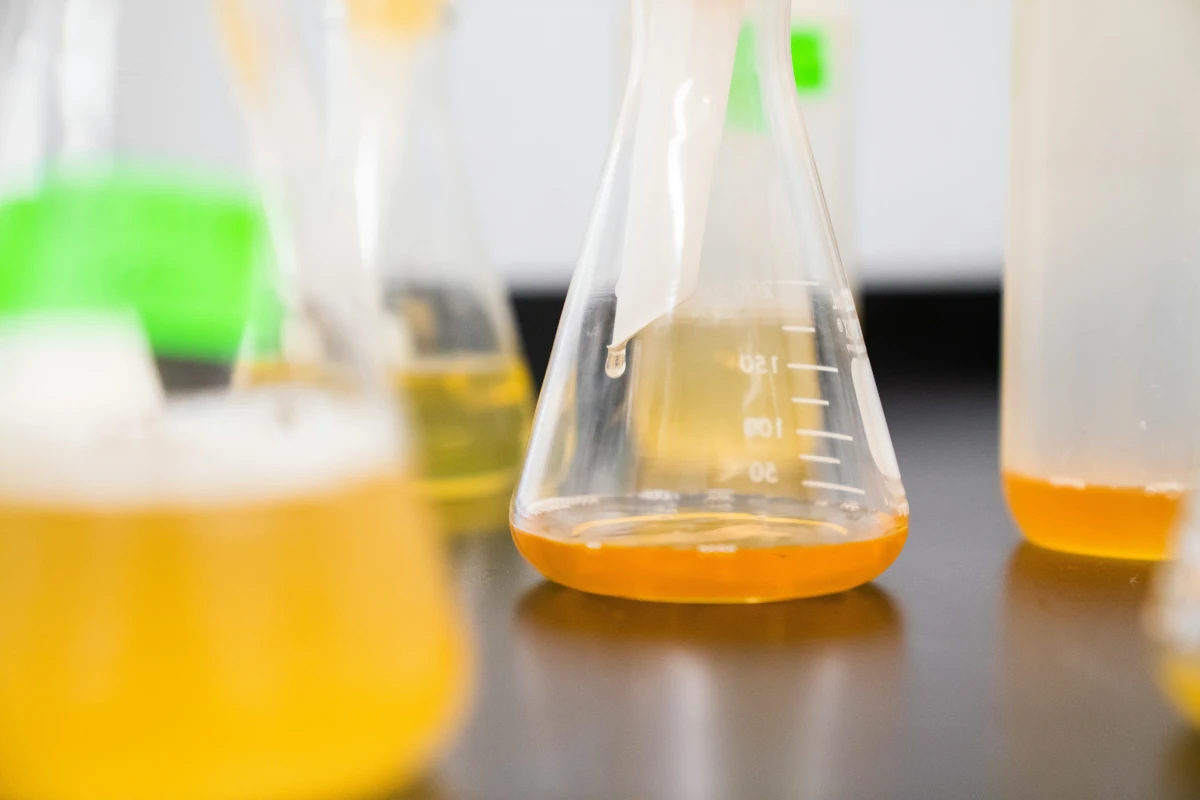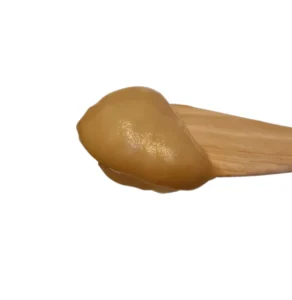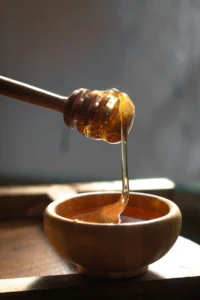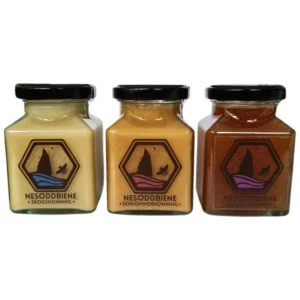For years, Manuka honey has reigned supreme in the world of medicinal honeys. Touted for its exceptional antibacterial properties, it has become a staple in natural remedies, wound care, and wellness supplements. However, new research suggests that heather honey (Calluna vulgaris) may be just as potent – or even superior – in some antibacterial aspects.
The Antibacterial Properties of Honey: How Does It Work?
All honeys exhibit antibacterial effects due to their low water content, high sugar concentration, and acidic pH. However, the real game-changer lies in the production of hydrogen peroxide (H₂O₂) and the presence of other bioactive compounds. Most honeys rely on an enzymatic process that generates hydrogen peroxide when diluted, a key mechanism in inhibiting bacterial growth [1].
Manuka honey stands out due to its methylglyoxal (MGO) content, which provides a non-peroxide-based antibacterial effect, making it highly stable over time and effective against resistant bacterial strains [2]. However, recent studies show that certain dark honeys – including heather honey – contain high levels of phenolic compounds and hydrogen peroxide-producing enzymes that rival, and in some cases surpass, Manuka honey’s antibacterial strength.
Heather Honey vs. Manuka Honey: How Do They Compare?
A study conducted at Oslo University Hospital (OUS) investigated the antibacterial effects of various honey types against methicillin-resistant Staphylococcus aureus (MRSA), Pseudomonas aeruginosa, and Klebsiella pneumoniae – bacteria commonly associated with chronic wounds and infections [3]. Results showed that Norwegian heather honey demonstrated equal or superior antibacterial activity compared to medical-grade Manuka honey.
Another European study from 2018 compared the antibacterial properties of 11 different honey types, including buckwheat honey, heather honey, and Manuka honey [1]. While Manuka honey performed well, buckwheat and heather honey exhibited stronger antibacterial effects against both Gram-positive and Gram-negative bacteria. Unlike Manuka, which primarily acts via MGO, these honeys produced significant amounts of hydrogen peroxide, which is highly effective against bacteria such as E. coli and Pseudomonas aeruginosa.
Additionally, heather honey is exceptionally rich in polyphenols and flavonoids, known for their antimicrobial and antioxidant benefits. These compounds enhance honey’s ability to neutralize harmful bacteria and support wound healing.
Key Findings: Why Heather Honey Deserves More Recognition
- Comparable Antibacterial Strength:
- Studies confirm that heather honey can be just as effective as Manuka honey in inhibiting bacterial growth, particularly in wound infections.
- Its hydrogen peroxide mechanism makes it potent against Gram-negative bacteria like Pseudomonas aeruginosa, which Manuka struggles to combat.
- Rich in Bioactive Compounds:
- Contains high levels of polyphenols, flavonoids, and antioxidants, contributing to its broad-spectrum antibacterial and wound-healing properties.
- Heather honey has been shown to possess superior anti-inflammatory effects, making it a promising candidate for skin treatments and immune support.
- A Powerful Option in Medicinal Honey:
- With increasing antibiotic resistance, natural antibacterial agents like heather honey are gaining importance.
- Research suggests that heather honey may be as effective, if not more so, than Manuka honey in certain applications.
Is Heather Honey the Future of Medicinal Honey?
With antibiotic resistance on the rise, natural antibacterial agents like honey are gaining importance. While Manuka honey has been the star of medical applications for years, research is proving that other dark, enzyme-rich honeys like heather honey may offer even greater potential in certain cases.
If you’re looking for a highly potent antibacterial honey, heather honey is an excellent alternative to Manuka. As more studies uncover its therapeutic potential, this unique honey may soon take its rightful place alongside Manuka in medical and wellness industries.
And if you’re looking for premium, raw heather honey, check out our store at NorwegianBeekeeper.com.
Important Disclaimer
- Honey should never be given to children under 12 months of age due to the risk of infant botulism.
- Only medical-grade honey should be used for treating open wounds. While raw honey has strong antibacterial properties, non-sterilized honey may contain spores and should not be applied to broken skin.
References
- Matzen, R. D., et al. (2018). "Antibacterial properties of different types of honey: A comparative study." Dermatology Research and Practice. https://pubmed.ncbi.nlm.nih.gov/30018636/
- Kwakman, P. H., et al. (2011). "How honey kills bacteria." Medical Drug Resistance. https://pubmed.ncbi.nlm.nih.gov/22095907/
- Merckoll, P., et al. (2009). "Bactericidal effect of honey on MRSA and other wound pathogens." Journal of Hospital Infection. https://pubmed.ncbi.nlm.nih.gov/19308800/





